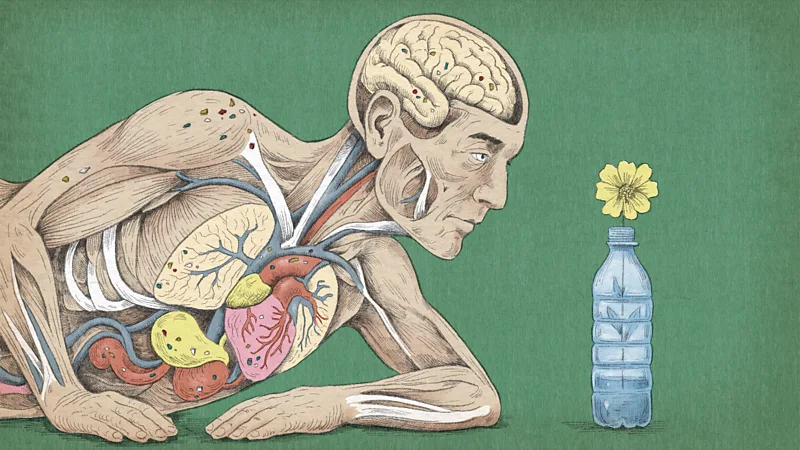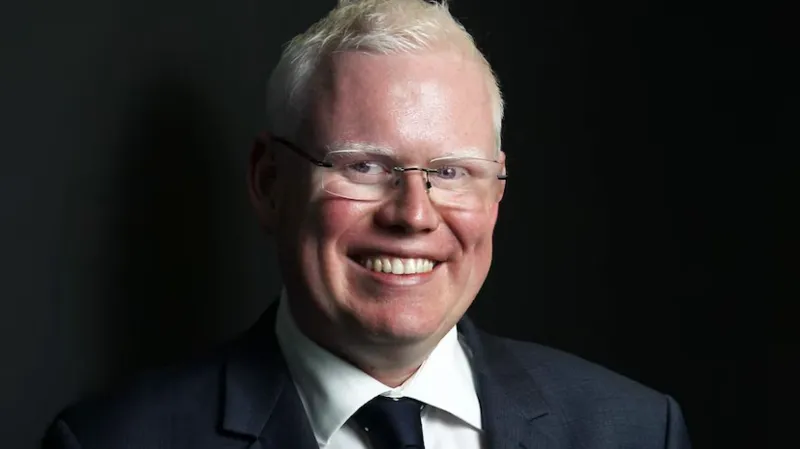‘We’re in mourning, but thank you for coming’: Attack fallout lingers as French Quarter workers welcome Super Bowl fans
Just before 9 a.m. on New Year’s Day, a server working off Bourbon Street traversed the maze of blocked streets and the army of law enforcement that had swarmed the French Quarter just a few hours earlier after an ISIS-inspired ramming attack.

She was trying to find a way to work.
Part of Bourbon Street would be closed for another day as police combed the scene and recovered the 14 victims’ bodies. The street, famous for debauchery and celebration, wouldn’t fully reopen until their blood was pressure-washed from the pavement. In the meantime, tourists needed a place to eat and drink.
Hundreds of dollars in tips rolled in that day, recalls this server, who doesn’t want to be named so she could speak candidly. But the money was little consolation for what she felt was some customers’ callous attitudes.
“It was really difficult,” she says, gesturing to the restaurant’s second floor, where its wrought iron balcony juts over the sidewalk. “I had customers that crowded to the end of the balcony to take pictures of the dead body that was halfway down the street in plain view, broad daylight, for half the f**king day.”
Since then, hospitality and service workers across the French Quarter have navigated a strange dissonance, grappling with the emotional and financial fallout of an assault that hit so close to home while putting on a smile to do what they do so well: Show tourists a good time in a romanticized city that could live or die by their spending.
“We know who makes this city run,” says Ashley Zoerner, a stand-up comic who sometimes gigs in the French Quarter and is among its nearly 4,000 residents.
For bartenders, servers, business owners, managers and performers here, there has been scant opportunity to process the New Year’s attack. They jumped right back into the college football Sugar Bowl frenzy, then the weekslong Carnival season. Now, tens of thousands of fans are descending for Super Bowl LIX, with security hitting a fever pitch.
More than a month after a US Army veteran careened his pickup down Bourbon Street – and just as New Orleans begins playing host to America’s signature pro sports and cultural extravaganza – there are few signs left of the attack, save the memorial at the corner of Canal Street, where the assault began.
It’s a solemn place where visitors quietly pay their respects, whispering and taking photos of 14 crosses standing sentry. At their feet are piles of wilting bouquets alongside overturned, unlit prayer candles, all contained behind New Orleans police barriers wrapped in Mardi Gras beads.
But a block downriver, Bourbon Street is bustling, catering again to the Sisyphean stream of tourists who, as the weeks tick by, are increasingly removed from the attack. Out-of-towners crowd the sidewalk to listen to a brass band, the trombones, trumpets and saxophone blaring over the march of the tuba and percussion. A kid in a Philadelphia Eagles T-shirt dances in the street.
Some workers welcome the routine. This is just how things are done in New Orleans’ most famous neighborhood. Plus, they have to make a living: slinging cocktails, taking orders, giving cemetery tours, deejaying, performing.
None faults visitors for wanting to enjoy themselves. But more than one uses the term “jaded.” The server who went to work in those hours after the attack has one wish: that tourists would be more “mindful.”
“Don’t be f**king callous,” she says. “There are people that work here every day, that live here, that have to be here – and continue dealing with the aftermath.”
‘How are you going to bounce back’
Tammi Diddley smokes a cigarette behind the wheel of her Ford pickup, taking a break from busking. She’s making do, for the moment, with an incomplete drum kit: no toms, no hi-hat.
She was out here on Bourbon Street on New Year’s Eve, she says, and it was packed. And she’d set up right here, feet from the end of the 300 block of Bourbon Street, she recalls.
But in the wee hours of 2025, “I got that funny feeling,” Diddley says, “like the hair stands up on the back of your neck.”
She packed up and went home.
Zoerner, the comic, was asleep in her studio apartment feet from Bourbon Street, she remembers. Her mom and teenage nephews were camped out on a futon and the floor when they heard the attacker’s 6,000-pound, electric Ford F-150 speed down the road before hitting a cherry picker. Then came the sound of gunfire from police, who killed the armed assailant.
“What was that?” one of the teens asked. “Did you hear that?”
If it weren’t for her relatives’ visit, Zoerner might have been out there amid the carnage, she recalls over a traditional Monday meal of red beans and rice as a fellow comic prepares a late show-style monologue for a head-to-head competition.
Zoerner still wonders about a girl she saw earlier that night who had money pinned to her clothes – a New Orleans birthday tradition – and was bound with friends for Bourbon Street.
“All I can think is, ‘Man, I really hope those people are OK.’”
When Diddley learned of the attack, she wept, wondering whether she could have changed something if she’d stayed. But today, with the sun shining, the crowds humming and music blaring from seemingly every bar – so loud she can hardly be heard – she feels safe.
“I wouldn’t be out here playing drums in high heels if it wasn’t safe, honey,” she says.
Zoerner, who also tends bar and gives tours in the nearby Tremé neighborhood, acknowledges it has been difficult at times since the attack to get on stage and do stand-up. She’s never sure whether she should mention the attack.
“If you do address it,” she asks, “how are you going to bounce back from that and turn it into your material?”
But for her community, comedy is cathartic and therapeutic.
“We’re aware this sad thing happened,” she says. “We’re not trying in any way to diminish that. But now we’re going to do what we’re here to do.”
‘We’re in mourning … thank you for coming’
“I can’t not do this,” says Toast Korozsia, interrupting himself mid-sentence to point out a building on Exchange Alley – a quiet pedestrian walkway – that once belonged to the French impressionist painter Edgar Degas.
Korozsia is a haunted history tour guide, and he’s first to point out he looks the part, with silver piercings in his nose and ears, and long black hair matching his black jeans, shirt and vest. But his work goes beyond cemetery and true crime tours: He’s a cultural ambassador (it says so on his business card), committed to showing tourists what makes New Orleans New Orleans, where he moved from Chicago seven years ago.
Since New Year’s, Korozsia has started his tours acknowledging the “tragedy” in the not-so-distant past, he explains.
“We just had a terrible tragedy down here,” he’ll tell tour groups. “We’re in mourning, but thank you for coming … We’re going to give you a good time, because that’s what we do. But understand, this is not the way that we usually are.”
People have been understanding for the most part. But Korozsia also believes tourists’ behavior has deteriorated in recent years, exhibiting what he feels is a “lack of respect for people that live down here.”
“People behave here in ways that they would never behave in other places,” he says, adding he has kicked people off tours for peeing on buildings.
Still, “if it were not for tourists,” Korozsia says, “we don’t get to work.”
In the days after the attack, Mark Schettler heard the jokes made on Bourbon Street by tourists who had drunk too much, he says. It bothered Schettler, the executive director of Shift Change, a nonprofit that supports service industry workers.
But he also recognized it as a way for visitors to cope with partying in a place where so much mayhem just unfolded. And at least they were here, he says, giving their business.
“I would rather have (a tourist) on Bourbon Street who’s being an idiot in the street than being scared of us at home.”
‘Not something we want to tell people’
Since the attack, some workers have been “resentful at times” toward tourists. But their manager at a Bourbon Street business feels differently, he says, likening himself instead to a “mother hen” shielding customers from what he’s going through.
“There’s, like, a little ball of anxiety that forms in the pit of my stomach, and I just sort of carry that around all day,” says the manager, who also asks not to be identified so he could speak openly. His customers seemingly have no idea, and he’d like to keep it that way.
“They have no idea a body was there two weeks ago,” he says of Bourbon Street. “They have no idea. And why should they? It’s not something we want to tell people, right?”
New Orleans is known for being “resilient,” says Olivia McCoy, a former service industry worker who founded WeHelp NOLA, an organization that, for a small fee, helps partner businesses give employees access to mental health services. But people are tired, she says, of being resilient, of having to “forge ahead” in the face of painful events.
Since the New Year’s violence, WeHELP – through fundraising and donations – has been able to open its services to all impacted workers, she says, regardless of whether they’re members.
At first, many were concerned about safety and the threat of a copycat attack, McCoy says. Now, they’re “dealing with the residual effects of how that affected them, mentally and emotionally – and also how it may affect them financially moving forward.”
‘Never been as stressed … as I am now’
Some wish Bourbon Street had stayed closed longer than it did. Jamaal Robinson, who emcees at a karaoke bar under the alias DJ Rooster, isn’t one of them.
“We bounce back from stuff like this really quick. It might sound callous, but we just understand the reality of things, that life has to move on,” Robinson says. “We all work service industry. If nobody was here, we was all broke. Bills ain’t gonna stop.”
That reality is all too apparent to business owners who say their numbers are down, though it’s difficult to know how much the downturn owes to the New Year’s attack or to mid-January’s once-in-a-generation winter storm.
The snow didn’t help – but it at least forced Dominic Hernandez, the owner of The Double Club, to finally take a break.
Even the attack hadn’t forced him to close, the Angeleno says as he gets ready for a West Coast taco night, among events he orchestrated in recent weeks to bring in the “normal” amount of money (there was also the Roan of Arc party – a Chappell Roan-themed bash to coincide with the Joan of Arc parade, among the first this Carnival season – and a paint-and-sip night).
“We put a lot of effort into these events, and maybe the turnouts aren’t as good as they can be, but we’re hitting the numbers we need to at least get by,” Hernandez says. “It’s a hard thing to be grateful for because it’s something we’re putting our all into.”
Similarly, Kirk Estopinal, a partner with Cure Collective, is “needling” his restaurant Cane and Table – several blocks downriver of Jackson Square, where the St. Louis Cathedral this week is lit up for a Super Bowl-themed light show – at a level he never has before. The native New Orleanian tries to calculate what the restaurant might pull in each day, then whose dinner shift to cut, trying his best to be even-handed so everyone can make a living.
“Literally, I have never been as stressed about this restaurant as I am now,” he says, estimating he’s down about 40% compared with last January.
A dip is to be expected. The French Quarter hosts “seasonal” business, with purveyors building up reserves in busy periods to carry them through slow ones. But so far, Estopinal hasn’t built his coffer back up, he says.
Again, it’s hard to say how much this is due to the attack. But Estopinal bases how tourists might feel on the opinions of people he knows living across the Mississippi River, in the suburbs.
“They’re constantly asking me, ‘How is it? Do you feel safe?’ Because they’re worried,” he says, noting he does not feel unsafe and the police chief last year touted a 35% annual drop in murders and a 26% drop in crime overall.
Estopinal now fears the notion of New Orleans as dangerous will get cemented in outsiders’ minds, particularly if anything remotely violent happens around the Super Bowl or Mardi Gras season. A shooting, for example, that would otherwise warrant a couple minutes on the local news would take on outsized significance.
“That would be really bad, like, the pattern of it happening,” Estopinal says. “It may not even be a big, giant deal, but if it’s remotely scary, it’s going to be everywhere, and that worries me, because then it reinforces that fear.”
‘The river’s gonna keep flowing’
No fewer than four people approach Waites Laseter within a few minutes late on a recent night, hugging him or lighting a cigarette, so well-known is he along this stretch of Chartres Street between Canal and Iberville, where he’s a bartender at the Mahogany Jazz Hall.
Laseter’s not working tonight, but he’s still around. He’s worked at most of these places and estimates he’s been fired from at least half. These bartenders know his drink of choice – a shot of Campari – and he’s here so often, it’s where he gets his Amazon packages delivered instead of to his home, several blocks deeper into the French Quarter.
It was this community that was Laseter’s first thought the morning after the New Year’s attack as he, too, maneuvered to get here and check on everyone.
He couldn’t help but laugh at what he saw along the way.
“The absurdity of New Orleans … continuing on around me,” he recalls: A family on vacation taking a group photo near the scene of the attack; a man with a card table hawking Sugar Bowl T-shirts stamped with the wrong date after the massacre postponed the game. “And none of it really makes sense, except the fact that it’s not supposed to make sense.”
“Even in the face of absolutely abhorrent tragedies, there’s always going to be that thing of humor. It’s such an inherent part of the coping mechanism of existence period for anybody, I think,” he says, “but even more so in a town that’s built on over-flavoring, on abundance, that’s built on indulgence.”
It’s still jarring, yes, Laseter says, to see the police and drug-sniffing dogs beneath a flood light at the end of the street as the Super Bowl security ramps up. But New Orleans is tenacious, he says, like the jazz musician in the hall several doors down who’s studied his instrument since his dad put it in his hands.
“It’s unstoppable. It’s unquenchable,” he says of the city. Put simply: “The river’s gonna keep flowing.”
-CNN







